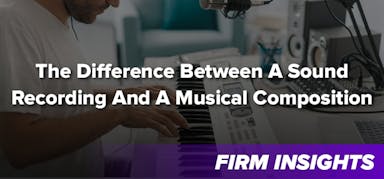
Scarinci Hollenbeck, LLC
The Firm
201-896-4100 info@sh-law.comAuthor: Scarinci Hollenbeck, LLC|November 20, 2015
Movies are typically not shot exclusively on private sets, and if they were, they likely wouldn’t appear nearly as realistic. However, shooting in a public setting is often accompanied by certain legal requirements.
When a production team chooses a public setting for a shoot location, they are typically implicitly opting to include people in the background of the shots – individuals who have nothing to do with the film, and are going about their everyday business. These people didn’t decide to appear in the background of a movie, and may not even be aware there is one being shot until they are on location. Everyone – even the people walking on the street who have nothing to do with the film – has what is called a Right of Publicity. This means they have the right to control how their names and likenesses are used.
In terms of the right of publicity, this is the realm where signed release forms come into play. At times, when shooting in a public place the team will have to ask individuals in the background to sign a release allowing their likenesses to be used in the film. However, this isn’t always necessary. There are a variety of factors that come into play. When determining whether a right of publicity release is necessary, ask these questions:
If the answer is yes to the first two questions, then typically you will have to obtain signed release forms. However, if the film isn’t quite intended for commercial use, the appearance of the individuals could fall under free speech or press protections – think news crew shooting in a mall.
Also important, is how public the location of shoot is. The less the average individual would expect any degree of privacy, then the less likely it is that will have to ask people to sign release forms. However, the more private an area becomes – such as private property open for public use – the more you may have to think about asking people to sign release forms. Central Park versus Madison Square Garden, for example, are very different in terms of ownership and degree of privacy. No one would rightfully expect privacy in an open space in Central Park, but shooting a film in the Garden may require signed releases.
One way that production crews can ensure the right to shoot in a place that may lean more toward the private end of the spectrum is to post clearly visible signs at entry points, notifying individuals that if they enter a given space they are consenting to being filmed, and as a result, to their likenesses potentially appearing in the movie.
If you’re curious about whether or not you need a signed right of publicity release form for shooting in a public or private location, speak with an experienced for advice.

The Firm
201-896-4100 info@sh-law.com



Movies are typically not shot exclusively on private sets, and if they were, they likely wouldn’t appear nearly as realistic. However, shooting in a public setting is often accompanied by certain legal requirements.
When a production team chooses a public setting for a shoot location, they are typically implicitly opting to include people in the background of the shots – individuals who have nothing to do with the film, and are going about their everyday business. These people didn’t decide to appear in the background of a movie, and may not even be aware there is one being shot until they are on location. Everyone – even the people walking on the street who have nothing to do with the film – has what is called a Right of Publicity. This means they have the right to control how their names and likenesses are used.
In terms of the right of publicity, this is the realm where signed release forms come into play. At times, when shooting in a public place the team will have to ask individuals in the background to sign a release allowing their likenesses to be used in the film. However, this isn’t always necessary. There are a variety of factors that come into play. When determining whether a right of publicity release is necessary, ask these questions:
If the answer is yes to the first two questions, then typically you will have to obtain signed release forms. However, if the film isn’t quite intended for commercial use, the appearance of the individuals could fall under free speech or press protections – think news crew shooting in a mall.
Also important, is how public the location of shoot is. The less the average individual would expect any degree of privacy, then the less likely it is that will have to ask people to sign release forms. However, the more private an area becomes – such as private property open for public use – the more you may have to think about asking people to sign release forms. Central Park versus Madison Square Garden, for example, are very different in terms of ownership and degree of privacy. No one would rightfully expect privacy in an open space in Central Park, but shooting a film in the Garden may require signed releases.
One way that production crews can ensure the right to shoot in a place that may lean more toward the private end of the spectrum is to post clearly visible signs at entry points, notifying individuals that if they enter a given space they are consenting to being filmed, and as a result, to their likenesses potentially appearing in the movie.
If you’re curious about whether or not you need a signed right of publicity release form for shooting in a public or private location, speak with an experienced for advice.